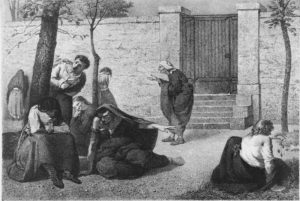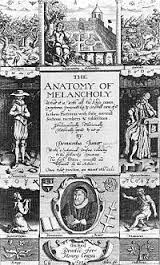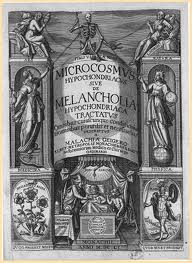Treatments for insanity were surprisingly consistent until the modern era. Bleeding, purging, forced vomiting, and other physical remedies were go-to procedures until the early 1800s. Purging (causing the bowels to evacuate) and vomiting continued into the nineteenth century. Physicians turned to opiates to sedate patients early in the seventeenth century, and they were still popular in the nineteenth.
Even “new” psychological treatments created in the nineteenth century had echoes of this earlier period. Alienists and asylum superintendents in the 1800s recommended a change of scenery and light amusements to divert the troubled mind, particularly for those who fell into depression or melancholy as it was popularly called. Robert Burton, an expert on melancholy who wrote almost 1,400 pages on the subject in 1620, called for those afflicted with the condition to “seek merry company, play at honest amusements, dress gaily, and haunt light and lovely places.” The two treatments are remarkably similar, even though the first was part of the newly emerging “moral treatment” pioneered in the early 1800s.
On a darker note, authorities in the 1600s often beat the insane in much the same way parents would discipline unruly children. Some of the beatings or other forceful remedies for “misbehavior” could be quite painful and dehumanizing. Moral treatment succeeded in reducing or stopping such punishment for the behaviors of the insane, and patients enjoyed much more humane treatment for several decades. Unfortunately, the more crowded insane asylums became, the more often attendants ended up resorting to these primitive methods for controlling behavior. Some of the worst ills of the asylum era ended up being physical abuse and the various restraining devises attendants used.
______________________________________________________________________________________


